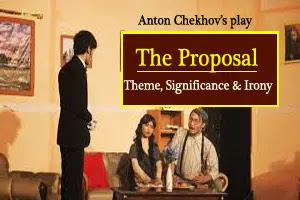Title: The Thief's Story
Summary:
"The Thief's Story" is a short story written by Indian author Ruskin Bond. It follows the life of a young boy named Hari, who lives in a small Indian town. Despite his impoverished background, Hari possesses a keen intellect and develops an uncanny skill for picking locks. He resorts to petty theft to survive and is often on the run from the authorities. One day, Hari's luck takes a turn when he meets a kind-hearted man named Suri, who offers him shelter and friendship. Hari begins to question his life choices and dreams of a different future. As the story unfolds, readers witness Hari's internal struggle as he grapples with his past actions and seeks redemption.
Critical Appreciation:
"The Thief's Story" is a thought-provoking tale that explores themes of poverty, morality, and the power of compassion. Ruskin Bond portrays the character of Hari with depth and sensitivity, offering readers a glimpse into the complexities of a young thief's life. Through Hari's experiences, the author sheds light on the harsh realities faced by the underprivileged sections of society, compelling readers to question the circumstances that lead individuals to engage in criminal activities.
The story's strength lies in its ability to evoke empathy and compassion for the protagonist. Bond effectively captures Hari's internal conflict, depicting his longing for a better life and his yearning to break free from the cycle of crime. The character of Suri acts as a catalyst for Hari's transformation, illustrating the impact of kindness and understanding on individuals caught in desperate circumstances.
Bond's narrative style is simple yet evocative, allowing readers to immerse themselves in the world of the story effortlessly. The descriptive language vividly paints the backdrop of the Indian town and enhances the emotional resonance of the narrative.
Overall, "The Thief's Story" is a poignant and introspective tale that raises important social questions while showcasing the potential for redemption and change. It reminds readers of the power of empathy and offers a glimpse of hope in the midst of difficult circumstances.
MCQs:
1. Who is the author of "The Thief's Story"?
a) Ruskin Bond
b) J.K. Rowling
c) Charles Dickens
d) Leo Tolstoy
2. What is the name of the protagonist in the story?
a) Suri
b) Hari
c) Bond
d) Dickens
3. In what country does the story take place?
a) India
b) England
c) Russia
d) United States
4. What skill does Hari develop?
a) Lockpicking
b) Painting
c) Singing
d) Writing
5. Who offers Hari shelter and friendship?
a) Suri
b) Hari's family
c) The police
d) Strangers on the street
6. What themes are explored in "The Thief's Story"?
a) Poverty and compassion
b) Love and betrayal
c) War and peace
d) Science and technology
7. What effect does meeting Suri have on Hari?
a) It makes him a better thief.
b) It causes him to question his life choices.
c) It leads him to commit more crimes.
d) It doesn't have any impact on him.
8. What does the story highlight about society?
a) The prevalence of crime
b) The power of friendship
c) The impact of poverty
d) The importance of education
9. What word best describes the narrative style of the story?
a) Complex
b) Elaborate
c) Simple
d) Mysterious
10. What is one of the story's main messages?
a) Crime pays off in the end.
b) Poverty is insurmountable.
c) Kindness can bring about change.
d) Stealing is acceptable in certain situations.
11. "The Thief's Story" is primarily set in a:
a) Large city
b) Rural village
c) Fantasy world
d) Suburban neighborhood
12. What does Hari dream of?
a) Becoming a police officer
b) Travelling the world
c) Joining a gang of thieves
d) Living a simple life
13. What does Hari struggle with internally?
a) His love for Suri
b) His desire for revenge
c) His past actions and morality
d) His fear of the police
14. How does Ruskin Bond's writing style contribute to the story?
a) It confuses readers with complex language.
b) It brings the characters to life through vivid descriptions.
c) It alienates readers with its distant tone.
d) It lacks emotion and depth.
15. Which of the following best describes Hari's socioeconomic background?
a) Wealthy
b) Middle class
c) Impoverished
d) Unknown
16. What role does Suri play in the story?
a) Antagonist
b) Mentor
c) Police officer
d) Businessman
17. The story's setting helps emphasize the theme of:
a) Family bonds
b) Personal growth
c) Social inequality
d) Political intrigue
18. What does the story suggest about the potential for change and redemption?
a) It is impossible to change one's circumstances.
b) People are trapped by their past actions.
c) Redemption is possible through kindness and understanding.
d) Criminals should be punished and cannot change.
19. How does the story evoke empathy from readers?
a) By glorifying the life of a thief
b) By presenting a morally perfect protagonist
c) By portraying the harsh realities faced by the protagonist
d) By avoiding emotional depth in the narrative
20. "The Thief's Story" is a tale that primarily focuses on:
a) Action and adventure
b) Romance and love triangles
c) Social issues and personal transformation
d) Supernatural elements and magic



